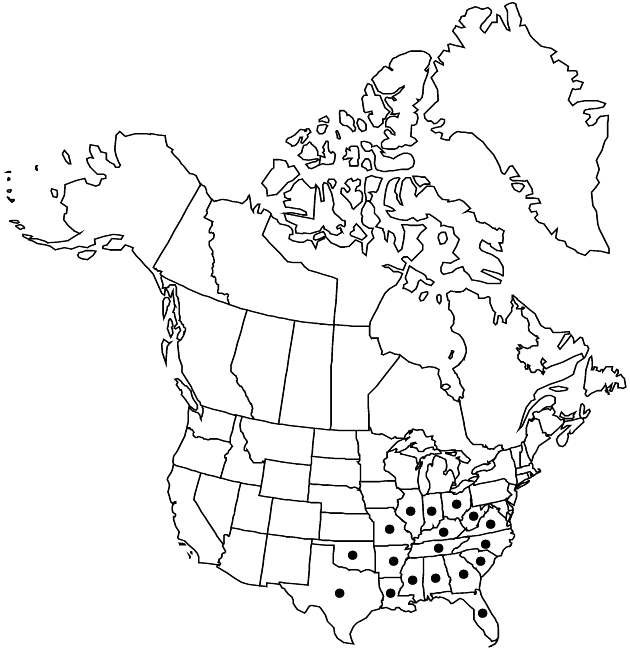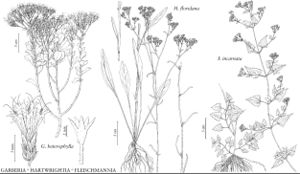Difference between revisions of "Fleischmannia incarnata"
Phytologia 19: 203. 1970.
FNA>Volume Importer |
imported>Volume Importer |
||
| (2 intermediate revisions by 2 users not shown) | |||
| Line 8: | Line 8: | ||
}} | }} | ||
|common_names=Pink slender-thoroughwort | |common_names=Pink slender-thoroughwort | ||
| + | |special_status={{Treatment/ID/Special_status | ||
| + | |code=F | ||
| + | |label=Illustrated | ||
| + | }} | ||
|basionyms={{Treatment/ID/Basionym | |basionyms={{Treatment/ID/Basionym | ||
|name=Eupatorium incarnatum | |name=Eupatorium incarnatum | ||
| Line 52: | Line 56: | ||
|publication title=Phytologia | |publication title=Phytologia | ||
|publication year=1970 | |publication year=1970 | ||
| − | |special status= | + | |special status=Illustrated |
| − | |source xml=https:// | + | |source xml=https://bitbucket.org/aafc-mbb/fna-data-curation/src/2e0870ddd59836b60bcf96646a41e87ea5a5943a/coarse_grained_fna_xml/V19-20-21/V21_1374.xml |
|tribe=Asteraceae tribe Eupatorieae | |tribe=Asteraceae tribe Eupatorieae | ||
|genus=Fleischmannia | |genus=Fleischmannia | ||
Latest revision as of 20:09, 5 November 2020
Plants 30–120(–200) cm. Stems lax, sprawling or scandent. Leaves: petioles (0.5–)1–3.5(–4) cm; blades triangular-deltate, (1–)2–5(–7) × (1–)1.5–3.5(–5) cm, bases usually truncate to cordate, sometimes obtuse, margins coarsely serrate to crenate-serrate, apices acute to acuminate. Involucres 4–5 mm. Phyllaries: outer lanceolate, inner lanceolate to narrowly oblong-lanceolate, glabrous or sparsely puberulent, apices usually acute to attenuate, sometimes rounded. Corollas usually pink-purple or whitish with pink to lilac lobes, rarely all white. Cypselae 1.8–2.8 mm, usually sparsely strigoso-hirtellous, sometimes glabrate. 2n = 20.
Phenology: Flowering Oct–Dec.
Habitat: Woodlands, thickets, moist soil, roads, ditches, stream banks, bottomlands, swamps, depressions, cedar glades
Elevation: 10–200 m
Distribution

Ala., Ark., Fla., Ga., Ill., Ind., Ky., La., Miss., Mo., N.C., Ohio, Okla., S.C., Tenn., Tex., Va., W.Va., Mexico.
Discussion
Fleischmannia incarnata was reported to occur in “s. Ariz.;” the report almost certainly was based on misidentification of F. sonorae.
Selected References
None.
